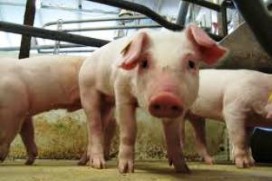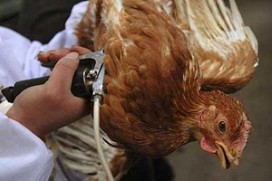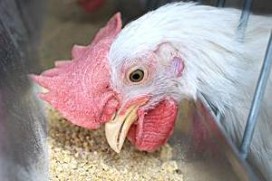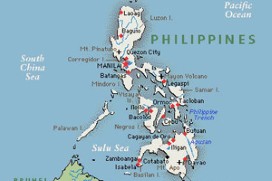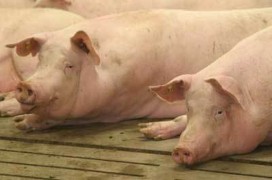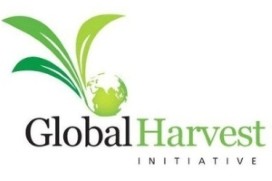The reliance on antibiotics in pig production systems can be shifted to improved feeding and management systems. Recent research and the development of new products, along with better management systems that help to control disease spread, are effective alternatives in commercial systems.
The use of antibiotics in livestock production is under debate in key pig production countries and several measures have already been taken to reduce their use. In 2006 antimicrobial growth promoters (AGPs) were banned in the EU. But this hasn’t necessarily led to the drop in the overall use of antibiotics that was hoped for.
For example, the use of antibiotics in the Netherlands remained the same and so the Dutch government has moved to tougher measures. By 2013, the use of antibiotics should be reduced to half the levels used in 2009. In addition, in the Netherlands it is no longer possible to administer antibiotics via compound feed. A third measure banned the use of several specific antibiotics as from January 2012 in herds operating within the Dutch quality system IKB.
Measures such as these are forcing the swine sector to adopt alternative means of keeping pigs healthy. These include improved herd and feeding management that have been shown to boost immunity, improve health and prevent disease spread. Many of the measures are directed at prevention rather than – as is the case in antibiotic use – cure.
Limitations of mixing
Wageningen University & Research Centre in the Netherlands has looked at preventing disease spread within herds. An experiment carried out at its experimental farm, Sterksel, headed by Dr Carola van der Peet-Schwering in 2008, compared the health status of two differently managed groups of piglets.
The first group of piglets were kept together and no cross fostering was allowed. They stayed together in the same pen and room with their litter mates from birth to slaughter. Another group of piglets included some that were cross fostered and then mixed both after weaning and when they were brought to the fattening rooms. The pigs were monitored until slaughter.The non-mixing group had 40% fewer incidences of pneumonia and gained 16 g/ day more in weight than their mixed counterparts. This study shows that disease spread can be reduced on farm by avoiding mixing from birth to slaughter. Respiratory diseases and treatment costs can be reduced with improvements in pig health and performance, as shown in Figure 1.
With the continuing trend of larger litter sizes, it can be difficult to avoid the cross fostering option and use of foster sows. However, systems such as the rescue deck, rescue cups and improved milk replacers, that can supplement sow milk and rearing potential, can be used to enable a litter to remain ‘intact’. This way, cross-contamination can be limited, as piglets do not have to be transferred.
Diet reducing Streptococcus suisSteptococcus (suis) infection is a problem in many herds causing nervous behaviour, joint inflammation and mortality. In the Netherlands the main use of antibiotics on swine farms is for treating Streptococci. Sterksel research farm investigated the use of a specially designed feed to reduce Streptococcus infections. This feed was compared to a standard weaner diet for the first two weeks post-weaning. The composition of the feed types is shown in Table 1.
The main feature of the special weaner feed was more highly digestible components. These reduce undigested material that can otherwise serve as a substrate for pathogenic bacteria. It also had a higher content of organic acids and medium chain fatty acids (coconut oil) that can affect the growth of bacteria. Piglets fed on the special feed had fewer clinical signs of Streptococci, significantly reduced veterinary treatments and numerically reduced mortality than the piglets fed on the standard feed. It is likely that these feeds cause less damage to the intestines. The resulting healthier intestine prevents Streptococci from leaking from the intestines into the blood and then to the brain and joints. This trial indicated that a specially designed feed with these added features can limit the risk of Streptococci.
Supporting immunitySupporting the immune system to be more effective will help the animal fight off disease and reduce cases, so in turn reducing treatment. If antibiotic use is prohibited, then the option of directly killing or at least inhibiting the action of the bacteria is reduced.
Much research is underway on supporting the pig’s own resistance to disease and reducing the severity of inflammatory reactions. Some natural plant components are known to play an important role in strengthening the immune response and promoting health.For example, fruits and grapes contain flavonoids, reducing the risk of inflammation and having antioxidant properties. They also neutralise the detrimental effects of free radicals in the body; an effect comparable to that of vitamin E. Free radicals occur in high amounts in the body during infections as a defence mechanism.
Recently, as part of a Provimi project on finishing pigs, a mixture of flavonoids was tested. Three groups of pigs were tested with different levels in their feed. The first was a negative control group with 5 ppm vitamin E in the feed. The second group was a positive control group with 25 ppm vitamin E in the feed and the third group was fed a feed with 5 ppm vitamin E and 20 ppm of the flavonoid mixture.
Blood was collected at 100 kg and 124 kg bodyweight for ORAC (oxygen radical absorbance capacity, an indicator of antioxidant capacity determination). Results are presented in Figure 2. The flavonoid mixture feed gave a higher antioxidant capacity than the negative control. There were no differences in growth performance, but both the positive control feed and the flavonoid mixture feed gave a significant improvement in feed conversion ratio.
Future expectationsNew experiments demonstrate that with improved herd management health can be improved.
The pig’s own resistance to disease can be supported by natural components like flavonoids. These compounds also reduce the risk of inflammation and protect the body against free radicals that occur during infections. These concepts may be used in combination with organic acids, medium chain fatty acids or essential oils that suppress bacteria.
References available on request
 "Today our feed industry is probably one of the most stable and fastest growing", he stressed, “The annual increase in production of animal feed is currently estimated at the level of 1.2-1.3m tonnes. This is about 9-10% of the annual production. Sustainability to the Russian feed industry has been brought primarily by the Russian poultry farmers and pig breeders, because the rapid growth in this sectors led to constant increase of the demand for animal feed and feed additives”.
"Today our feed industry is probably one of the most stable and fastest growing", he stressed, “The annual increase in production of animal feed is currently estimated at the level of 1.2-1.3m tonnes. This is about 9-10% of the annual production. Sustainability to the Russian feed industry has been brought primarily by the Russian poultry farmers and pig breeders, because the rapid growth in this sectors led to constant increase of the demand for animal feed and feed additives”.


